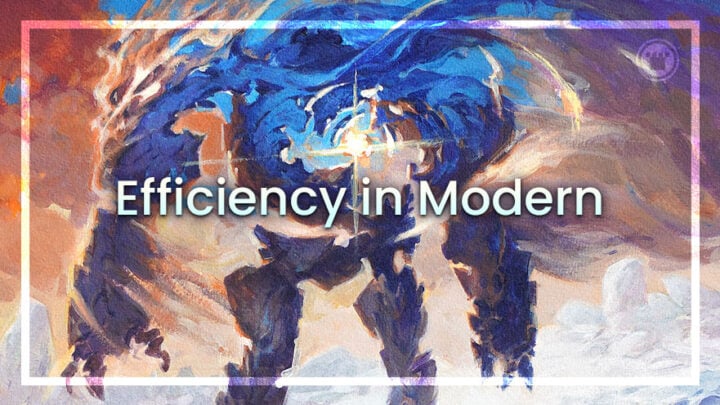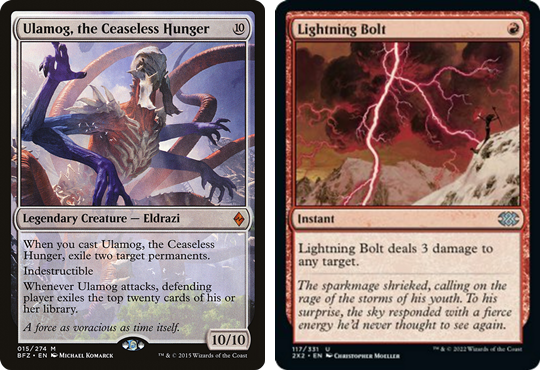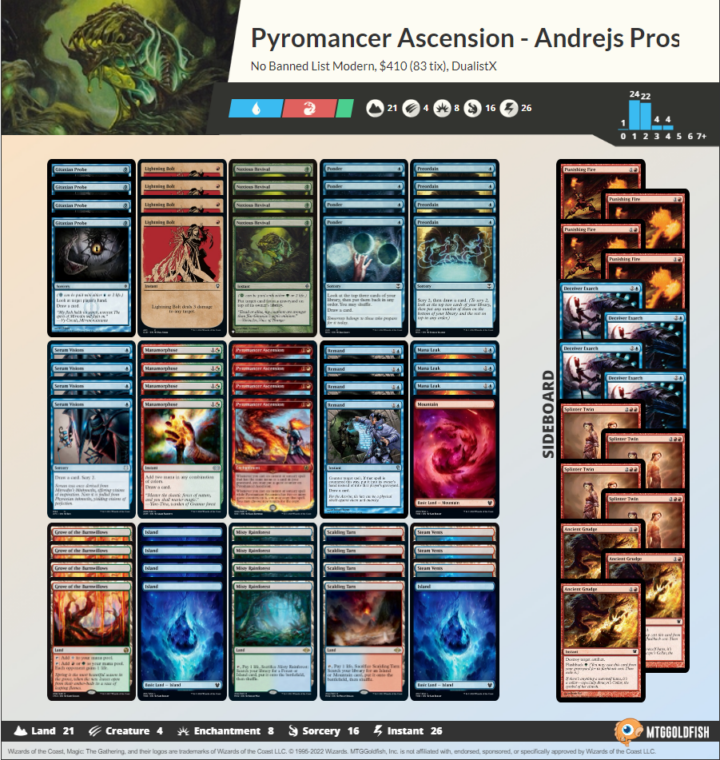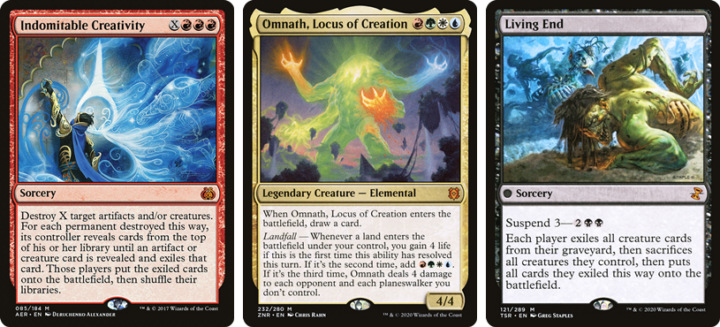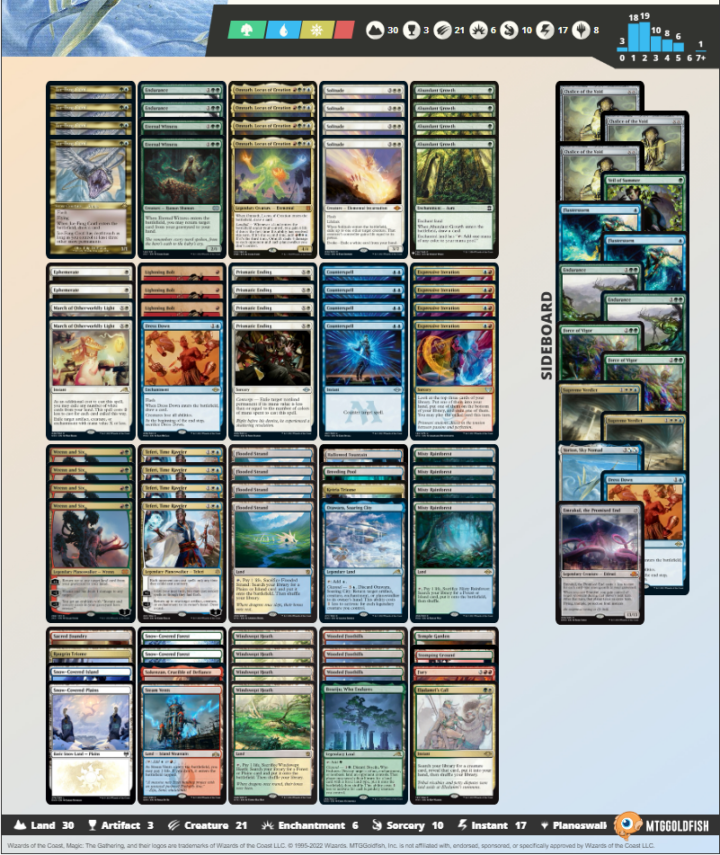Magic has such a wide vocabulary associated with it that words begin to mean different things to different people. “Efficiency” is one such word, and its meaning has changed over the lifespan of Modern.
The technical definition of efficiency is, “the ratio of the useful work performed by a machine or in a process to the total energy expended or heat taken in.” While some decks may be packing heat, that doesn’t seem to get us very far within Magic. But for many players, efficiency often refers to cards with low mana values, or decks with a low curve, focused primarily on one mana spells.
For a long time in Modern, I believe that was a reasonable way to explain efficiency. However, I’ve noticed a shift in both deck building and card design that has altered my understanding of what counts as efficiency in Magic.
Looking at the technical definition again, we can apply this directly to Magic by using a ratio of impact on the game to Mana value. Naturally, impact on the game is hard to quantify, because the impact of certain cards fluctuates depending on the texture of certain games. However, we can generalize the average impact on a game that a specific card will have.
The danger of looking solely at this efficiency coefficient is it doesn’t paint the picture of how games play in practice. Using the above ratio, we may conclude that Ulamog, the Ceaseless Hunger is more efficient than Lightning Bolt, because Ulamog will win the game a large percentage of the time it is cast, giving it a huge impact on the game.
Looking at cards purely based on efficiency misses the fact that Ulamog will show up in far fewer games overall, given the difference in casting costs, giving it a lower impact on the average game. This tells us there is an additional axis we need to consider, which is at what point the mana value of a card becomes high enough that it starts declining in number of games played (thus reducing impact in the average game).
Lightning Bolt is a fantastic example of this. With a mana value of one, it will show up in tons of games. And because it is flexible, it will almost always find a way to make some kind of impact.
A History on Modern Deck Building
Modern was released in 2011 with an initial ban list, which mostly featured cards from Standard or Extended that Wizards of the Coast thought would be too good. The company selected these cards because it didn’t want Modern to just be a copy of Extended for the first few years of its life.
There was a brief period of time between Modern’s official release in August 2011 to Pro Tour Philadelphia in September 2011. Players had to adapt quickly to the change from Extended to Modern for PT Philly. It was immediately clear that Modern would be more powerful than Extended but less powerful than Legacy.
When looking at the decks that made the top 8 of PT Philly, it is clear to me that players built decks that were closer to Legacy decks than anything else. Legacy has, for many years, been a format dominated by the cheapest and most powerful spells in Magic — decks feature extremely low curves that end the game quickly.
Ponder, Preordain, Gitaxian Probe, Rite of Flame, Splinter Twin, Mox Opal, Green Sun’s Zenith, Blazing Shoal, Cloudpost and Eye of Ugin all made top 8 of PT Philadelphia and are now banned. Some were banned right away, but cards like Mox Opal and Splinter Twin took years.
This tells me a lot about the deck building philosophies from that period. Players were opting for the leanest spells and curves they could find, which was a trend for many years to follow.
The following is data taken from MTGTop8.com, which details the deck occupying the most metagame share of top 8s for each year.
2012 Jund
2013 Jund
2014 Pod
2015 Twin
2016 Eldrazi
2017 Shadow
2018 Humans
2019 Phoenix/Burn/Dredge
2020 Burn
2021 Murktide
2022 Murktide/4C
Outside of Pod, almost all of these decks rely on efficiency and card quality to win the game as opposed to the brute force brought by more powerful but more expensive cards. Eldrazi sort of counts here, because they had access to Eldrazi Temple and Eye of Ugin for a lot of its success, both of which saved a drastic amount of mana from their otherwise expensive creatures.
Modern Deckbuilding, but Actually
Over the last couple of years, I have noticed the deck building paradigm has started to change: spells that cost 3-5 mana are starting to become powerful enough that they not only see play, but are premier cards in Modern. Granted, not every three mana card is Oko, Thief of Crowns, and not every four mana card is Urza, Lord High Artificer. But take the Oko + Urza midrange decks for example:
This deck isn’t as hyper efficient as other decks we’ve looked at, but it did terrorize Modern until Oko was banned. Then, Oko mostly just got replaced with Uro, Titan of Nature’s Wrath, which is another card that has a reasonably high casting cost for Modern that ended up being too powerful and getting banned.
If we come back down to earth, escaping the “cards that are too messed up and get banned” vortex, I believe the theory still holds true, especially in a Modern Horizons 2 world. The Magic definition of efficiency used to be a race to the bottom — who could do the most things early, double spell the most often and beat the opponent on action economy alone.
Murktide is a great deck that thrives on efficiency and tempo, and uses both to great effect. Death’s Shadow also shows up when the metagame is right for it, and it can play a successful tempo and efficiency game, but those are the only two decks that can get away with it consistently.
What is efficiency now? Instead of a race to the bottom, efficiency has started to become who can skip to the top the best. Cards like Indomitable Creativity, Omnath, Locus of Creation, Living End and the MH2 Evoke elementals do a great job at skipping ahead on the curve.
Tron is also a classic example of a deck that wants to skip to the end game. The issue is Tron’s vulnerability in the early parts of the game. Solitude and Fury make it so Four-Color Yorion decks aren’t as vulnerable in the early game as they would normally be, given how high their curve can get. The powerful part about Solitude and Fury is they provide early defense while still offering a strong, five mana play if you don’t need to use them early.
Similarly, Omanth fills the role of four mana spell that is powerful enough to see play on its own. Yet, when paired with a fetch land, it becomes effectively free. Plus, after that first turn, it makes a bunch of mana throughout the course of the game.
Indomitable Creativity and Living End function similarly in the way that they both generate a ton of mana from a relatively low base. For five mana, Creativity can put two copies of Archon of Cruelty in play, generating 11 mana and a pile of value from the triggers. Shardless Agent and Violent Outburst are both three mana that generate an incredible amount of mana by putting all the creatures in your graveyard onto the battlefield. Creativity and Living End are both singular cards that can easily generate an insurmountable battlefield, by skipping way ahead of your opponent, which makes their impact-to-mana-value ratio incredible.
End step
There are a multitude of reasons as to why this could have occurred. I usually attribute this to FIRE design, but there may be more to that than the surface would suggest. Next week, I’ll touch on that topic more — so be sure to stop in next Friday to catch my more expanded thoughts on that. As always you can find me on Twitter at @RappaciousOne for questions, comments or feedback.

Michael Rapp is a Modern specialist who favors Thoughtseize decks. Magic sates his desire for competition and constant improvement.

